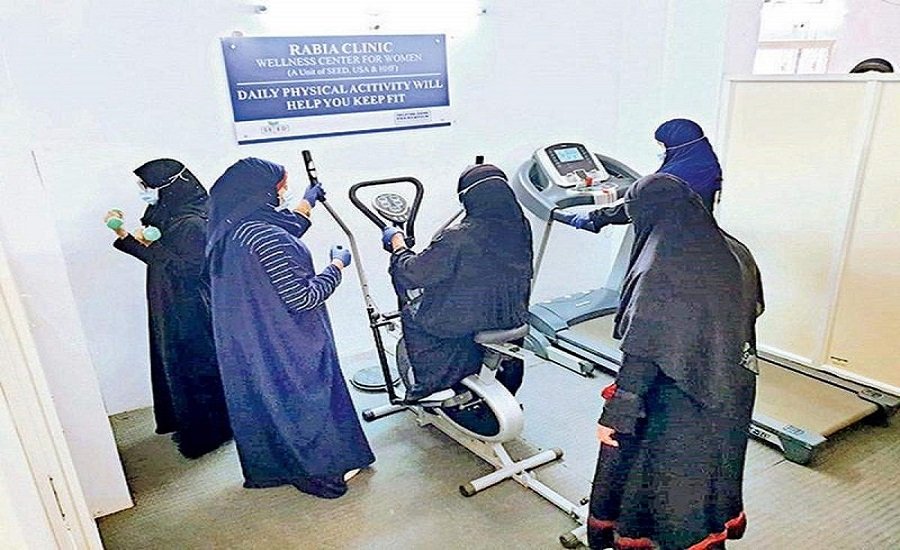
The gym at Masjid-e-Mustafa located in Wadi-e-Mahmood in Rajendranagar is funded by SEED, a US-based NGO
Clarion India
HYDERABAD — A mosque at Rajendranagar in Hyderabad has set up a wellness centre with a gymnasium for women residing in the nearby slums, reports Times of India.
The aim behind the gym and wellness centre is to reduce the incidence of non-communicable diseases in women living in the slum areas. This is the first time in the state that a mosque has facilitated a gym for women with a professional woman trainer .
The gym runs in two sessions daily. It has also health counsellors and a physician.
The gym at Masjid-e-Mustafa located in Wadi-e-Mahmood in Rajendranagar is funded by SEED, a US-based NGO. Helping Hand Foundation (HHF), a city-based NGO, is coordinating with the mosque committee in running the wellness centre.
The gym follows a survey conducted in the slums of Old City which revealed that 52 per cent women are at risk of cardiometabolic syndrome.
During the survey, women with a high risk of non-communicable diseases (NCDs), mainly with body mass index (BMI) greater than 25 and those with morbid conditions, were identified for the purpose of being trained at the gym.
“The key components of the NCD programme at the mosque clinic-cum-gym are risk assessment, counselling on diet and exercise and screening for renal, liver and eye issues. Trained and professional counsellors are part of the clinic,” said HHF managing trustee Mujtaba Hasan Askari.
The survey also revealed that women with the polycystic ovarian disease (PCOD) constitute about 30% of the participants, says the report.
Women between 25 and 55 years were screened as part of the survey. About 12% had single or comorbidities like diabetes, hypertension and thyroid problems. All women (20-49 years and above) had a BMI more than 25 (obesity).
Mujtaba said 52% of women had high hip-waist ratio more than 0.8, which predisposes the women to the risk of cardiometabolic syndrome, which is now classified as a cluster of dysfunctions like insulin resistance, tolerance and de-arranged lipids that lead to the risk of diabetes, hypertension and cardiovascular diseases.

